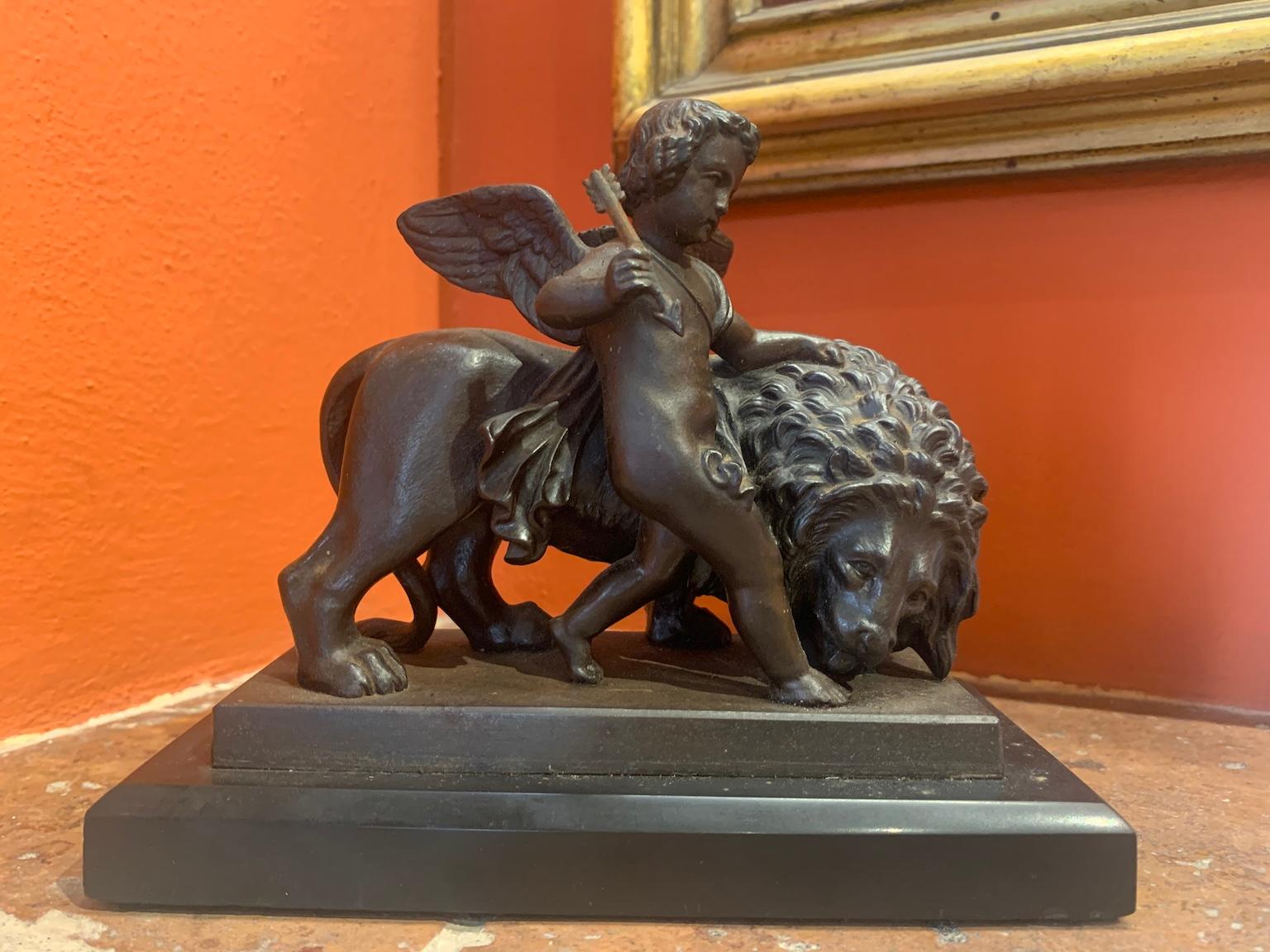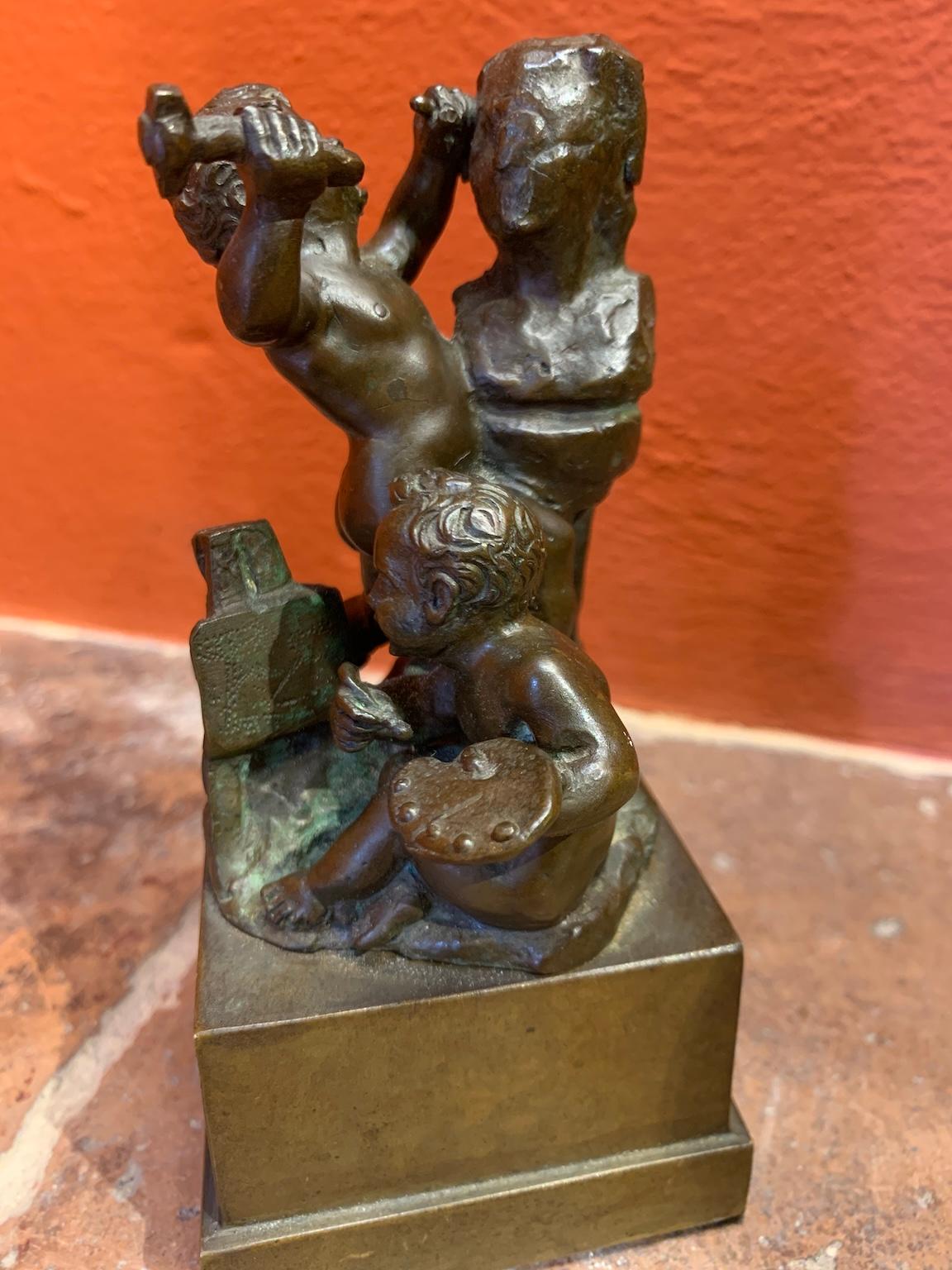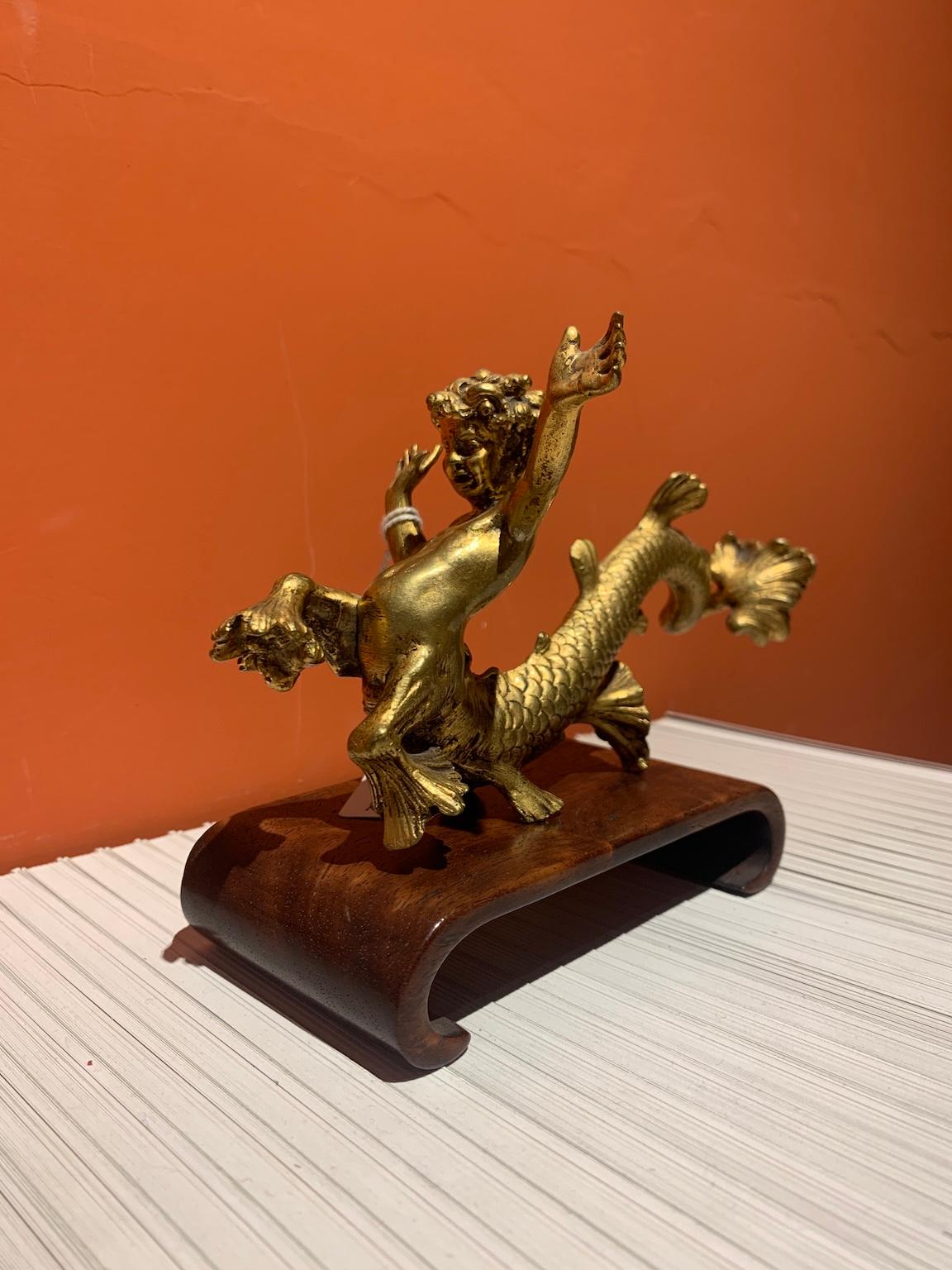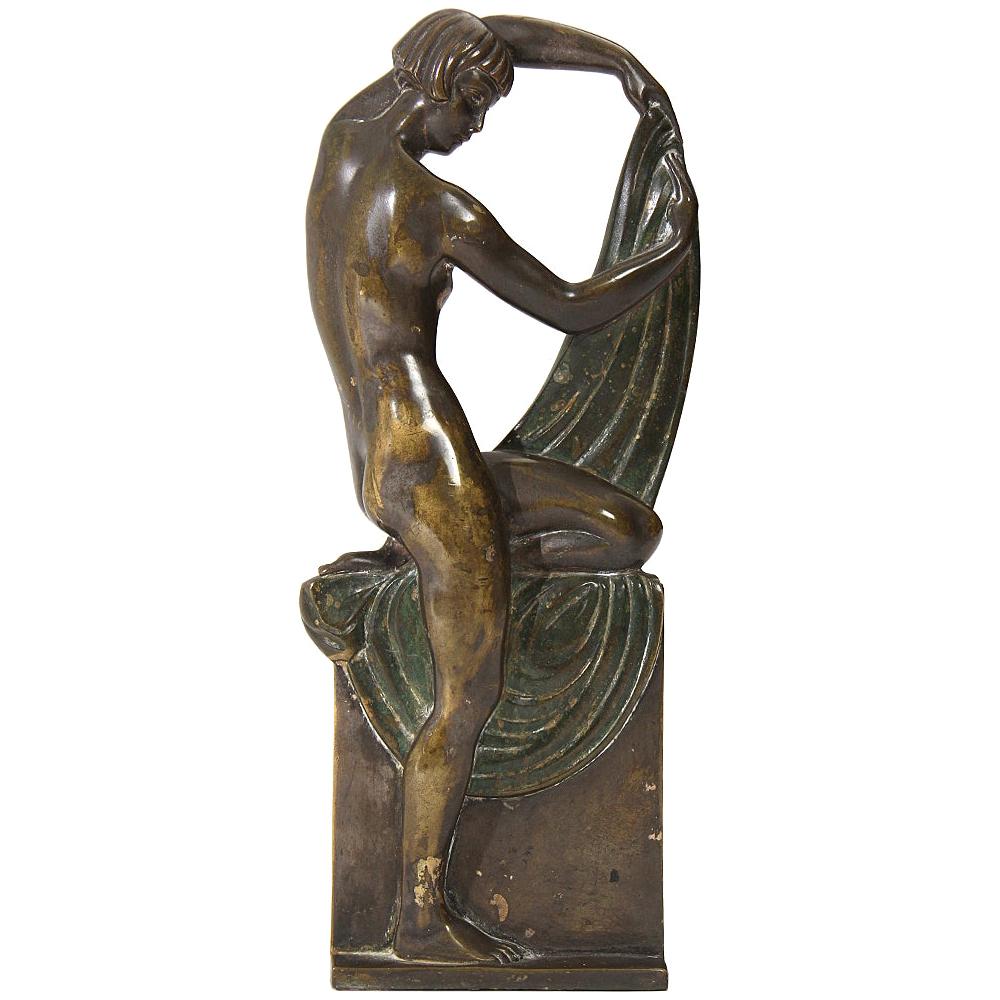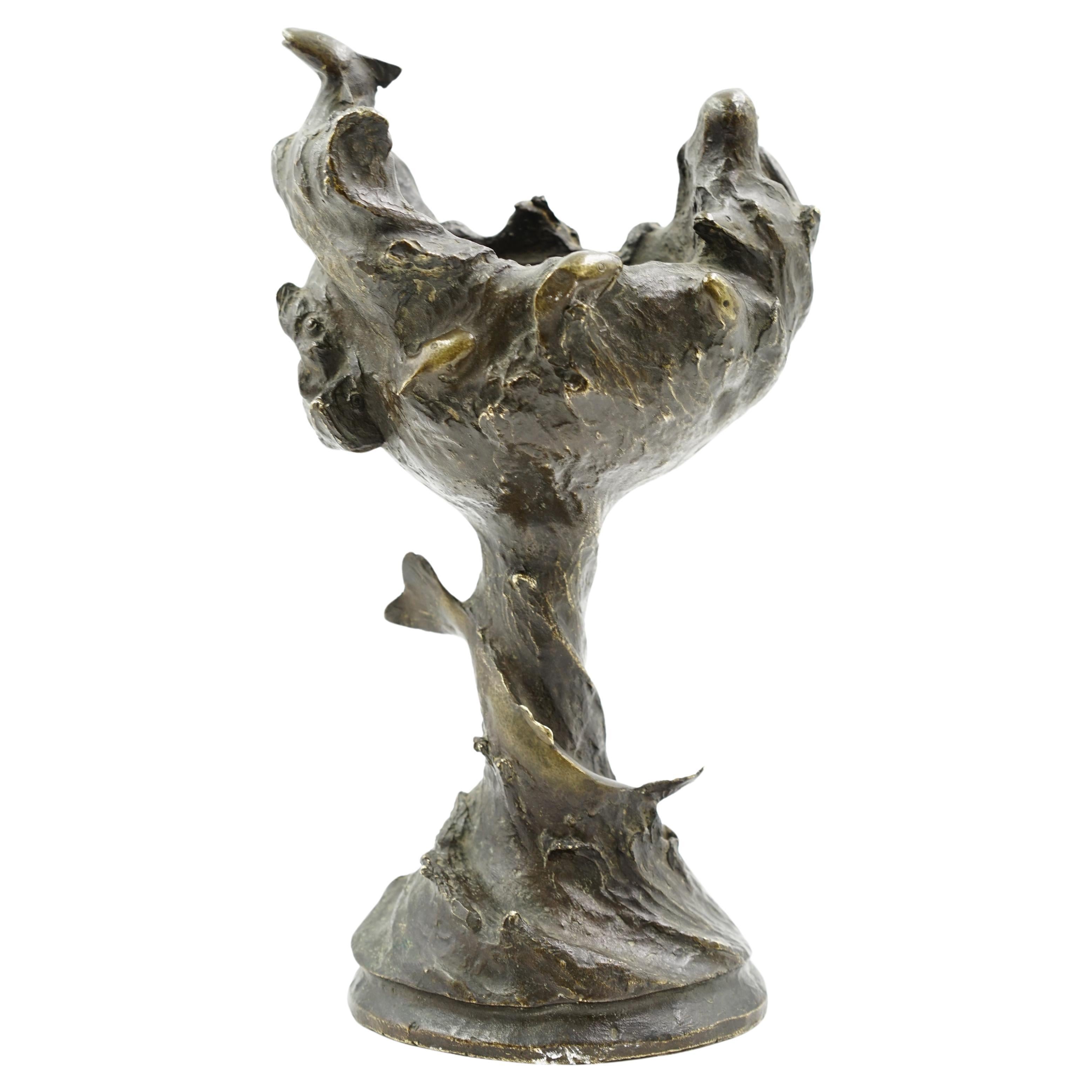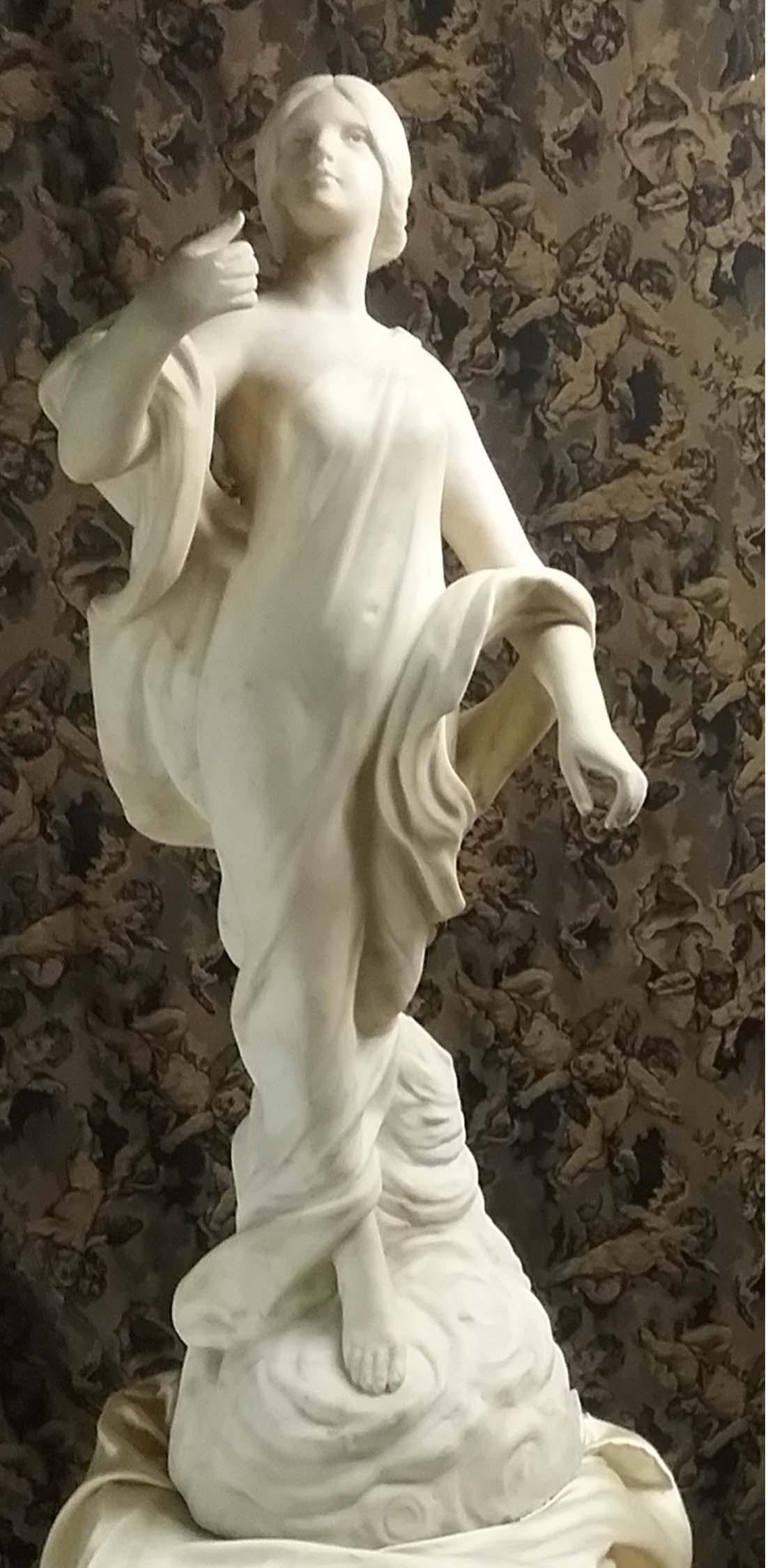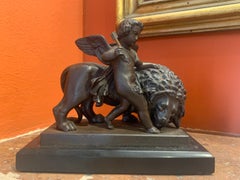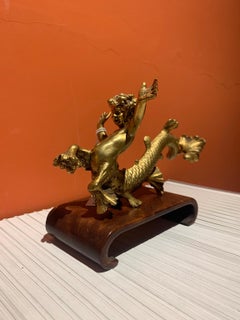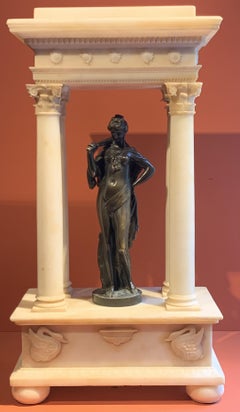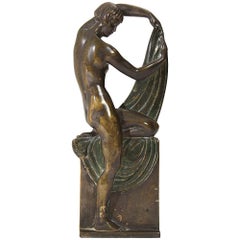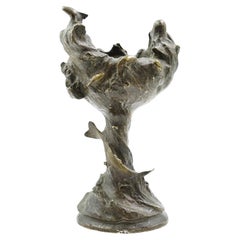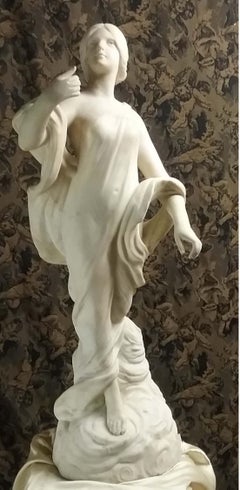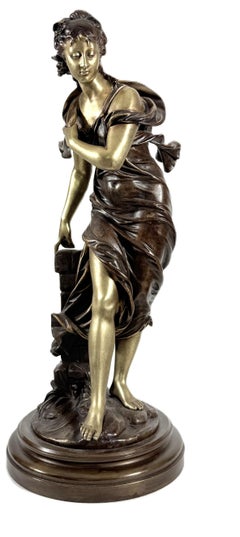Items Similar to Figurative bronze with a literary mythological theme from the early twentieth century
Video Loading
Want more images or videos?
Request additional images or videos from the seller
1 of 9
UnknownFigurative bronze with a literary mythological theme from the early twentieth centuryXXth Century
XXth Century
$2,133.92
£1,598.23
€1,800
CA$2,995.29
A$3,276.51
CHF 1,707.11
MX$39,423.78
NOK 21,618.21
SEK 20,297.43
DKK 13,710.42
About the Item
Early 20th-century Art Nouveau decorative bronze depicting a smiling mermaid carried by a wave above a fountain with a mask.
The reference is to the fairy tale by writer Hans Christian Andersen as seen by the presence of the sea foam-destiny of the mermaids was dissolving in that-and by the tail split in two as if they were legs.
The mask recalls typical Mannerist fountains.
- Creation Year:XXth Century
- Dimensions:Height: 9.45 in (24 cm)Diameter: 7.09 in (18 cm)
- Medium:
- Movement & Style:
- Period:
- Condition:
- Gallery Location:Florence, IT
- Reference Number:1stDibs: LU1240214590172
About the Seller
5.0
Vetted Professional Seller
Every seller passes strict standards for authenticity and reliability
Established in 1958
1stDibs seller since 2019
31 sales on 1stDibs
Typical response time: 4 hours
- ShippingRetrieving quote...Shipping from: Florence, Italy
- Return Policy
Authenticity Guarantee
In the unlikely event there’s an issue with an item’s authenticity, contact us within 1 year for a full refund. DetailsMoney-Back Guarantee
If your item is not as described, is damaged in transit, or does not arrive, contact us within 7 days for a full refund. Details24-Hour Cancellation
You have a 24-hour grace period in which to reconsider your purchase, with no questions asked.Vetted Professional Sellers
Our world-class sellers must adhere to strict standards for service and quality, maintaining the integrity of our listings.Price-Match Guarantee
If you find that a seller listed the same item for a lower price elsewhere, we’ll match it.Trusted Global Delivery
Our best-in-class carrier network provides specialized shipping options worldwide, including custom delivery.More From This Seller
View AllAllegorical mythological figurative bronze from the 19th century
Located in Florence, IT
Marble-based bronze statuette depicting Cupid, holding an arrow in his hand, walking caressing a lion's mane, lowered in the act of affectionately licking his little foot. The subjec...
Category
Mid-19th Century Romantic Figurative Sculptures
Materials
Marble, Bronze
Bronzetto italiano figurativo allegorico della fine del XIX secolo
Located in Florence, IT
Bronzetto firmato alla base F. de Luca, artista meridionale attivo fra XIX e XX secolo, raffigurante un'allegoria delle Arti.
In secondo piano, la "Scultura", identificata da un put...
Category
Late 19th Century Other Art Style Figurative Sculptures
Materials
Bronze
Figurative mythological bronze statuette in Florentine Mannerist style of the 19th century
Located in Florence, IT
Small gilt bronze objet d'art on wooden base depicting a young sea creature, most likely a newt.
These types of objects were very common in aristocratic homes, often kept in the lord...
Category
Early 20th Century Other Art Style Figurative Sculptures
Materials
Bronze
Alabaster temple with mythological figurative bronze figure from the 19th century
Located in Florence, IT
Alabaster temple with Corinthian capitals, palmette decoration runs along the rim. On the front, two swans are carved on the base, while there are five rosettes at the top.
In the ce...
Category
Early 19th Century Romantic Figurative Sculptures
Materials
Alabaster, Bronze
Terracotta figurativa italiana a tema mitologico dei primi del Novecento
Located in Florence, IT
Piccola terracotta a soggetto mitologico firmata sul retro sulla base "Zambini", che per la grafia (in particolare la Z che ricorda una F) permette di identificar...
Category
Early 20th Century Renaissance Nude Sculptures
Materials
Terracotta
Italian Mannerist style Italian mythological figurative bronze statuette of the 20th century
Located in Florence, IT
The small bronze depicts a small seated faun, immortalized while playing a wind instrument as can be clearly seen by the puffy cheeks. is signed at the base R. Castagnino and is from...
Category
1930s Mannerist Figurative Sculptures
Materials
Bronze
You May Also Like
Bronze Art Nouveau Sculpture from France
Located in Sagaponack, NY
A cast bronze sculpture with original markings. Stamped "Made in France" "LN PARIS JR".
Category
Early 20th Century French Art Nouveau Sculptures
Materials
Bronze
Art nouveau bronze sculpture
Located in Buenos Aires, Argentina
Art nouveau bronze sculpture
Origin France Circa 1900
Signed and dated on its base
Illegible signature
Reason: Representation of the sea ...
Category
Antique Early 1900s French Art Nouveau Vases
Materials
Bronze
Inspiration
Located in Los Angeles, CA
Beautiful Art Nouveau marble.
Campagne, Pierre Étienne Daniel French , 19th century , male. Active in Paris. Born 1851 , in Gontaud (Lot-et-Garonne). S...
Category
1890s Art Nouveau Figurative Sculptures
Materials
Marble
French antique bronze sculpture by Eutrope Bouret
By Eutrope Bouret
Located in Berlin, DE
This is an outstanding bronze statue of Eutrope Bouret, signed on the base, by the very well-known French artist Eutrope Bouret (1833-1906).
French antique bronze sculpture by Eutro...
Category
19th Century Art Nouveau Figurative Sculptures
Materials
Bronze
Sculpture of Lady in Bronze by Italian Author 1920s
Located in Milano, MI
Bronze sculpture of nude lady, made by Italian author in the 1920s
Ø cm 26 Ø cm 22 h cm 36
Category
Vintage 1920s Italian Art Nouveau Figurative Sculptures
Materials
Bronze
Art Nouveau Bronzevase Loiseau-Rousseau
By Paul Loiseau-Rousseau 1
Located in Aachen, DE
Schwere patinierte Jugendstil-Bronzevase von Paul Louis Émile Loiseau-Rousseau um 1905 (* 20. April 1861 in Paris, Frankreich; † 1927 ebenda), signiert.
Category
Antique Early 1900s French Art Nouveau Figurative Sculptures
Materials
Bronze
$1,754 Sale Price
20% Off
More Ways To Browse
Antique Bronze Nude
Bronze Nude 20th Century
Art Nouveau Bronze Nude
Rodin Iris
African Water Jugs
Marie Paule Deville
Joseph Holmes
Male Marble Nude Wrestling
Michael Naranjo
Sonia Pacheco
Peter Moore
Phillip Russell
Piano Artwork
Planetary Folklore
Pomeranian Dog
Portrait Of Cows
Portrait Of Dora Maar
Raccoon Painting
